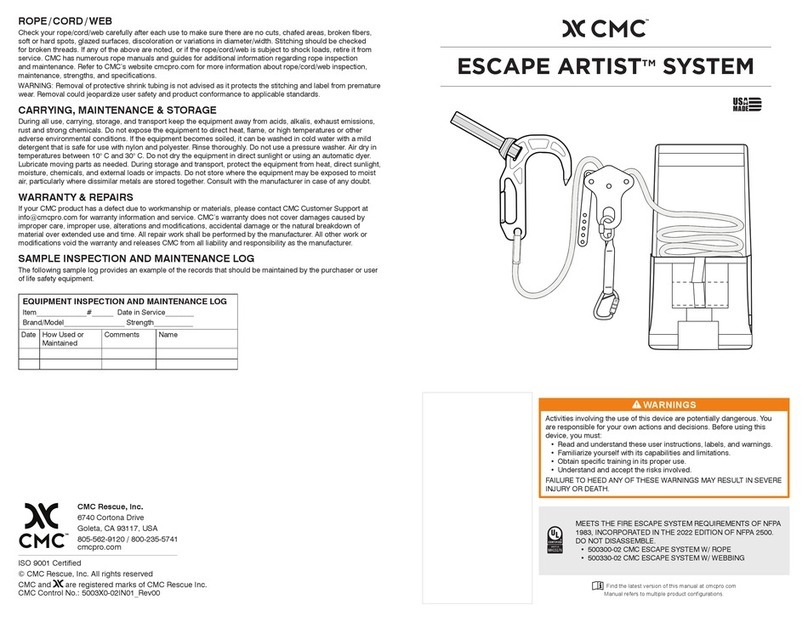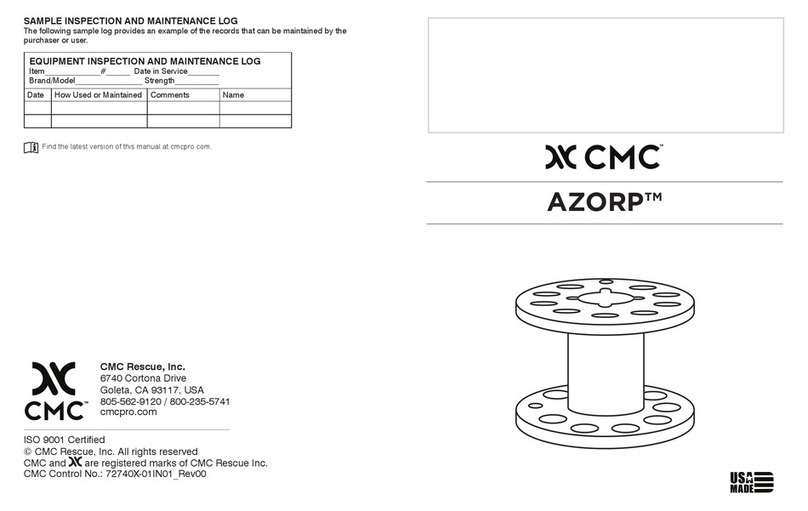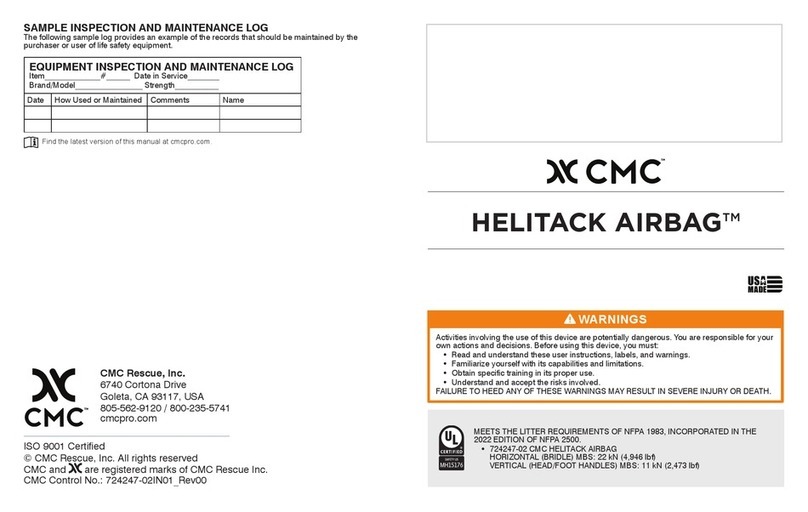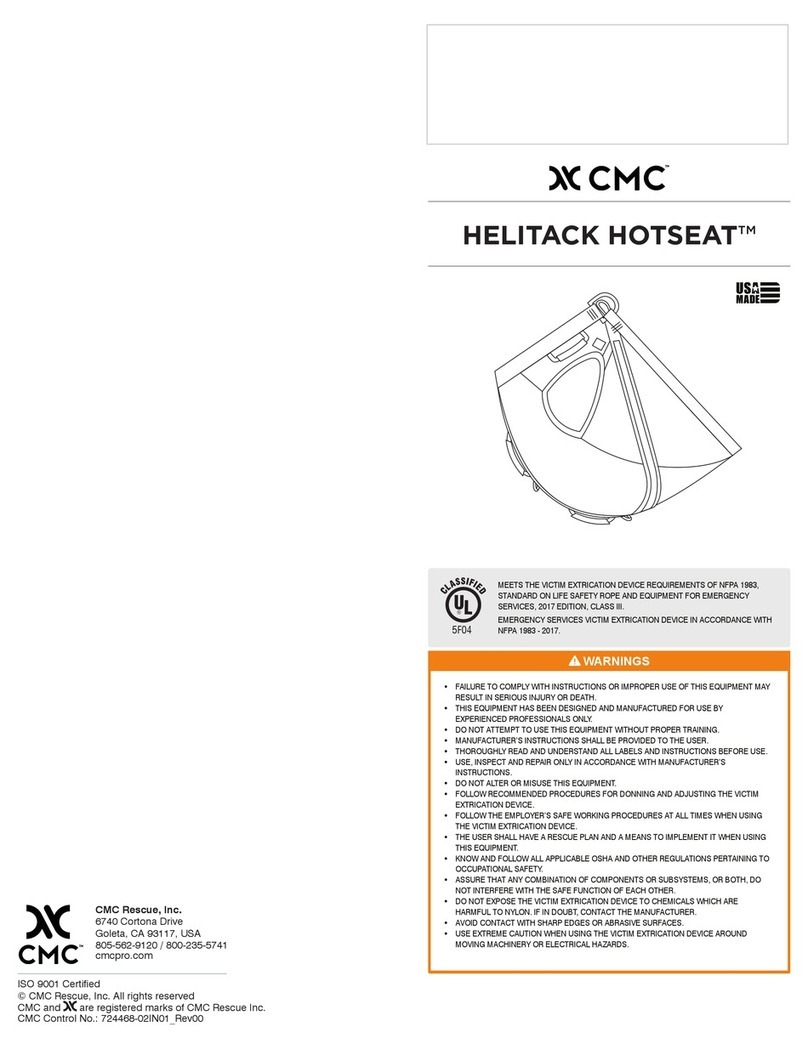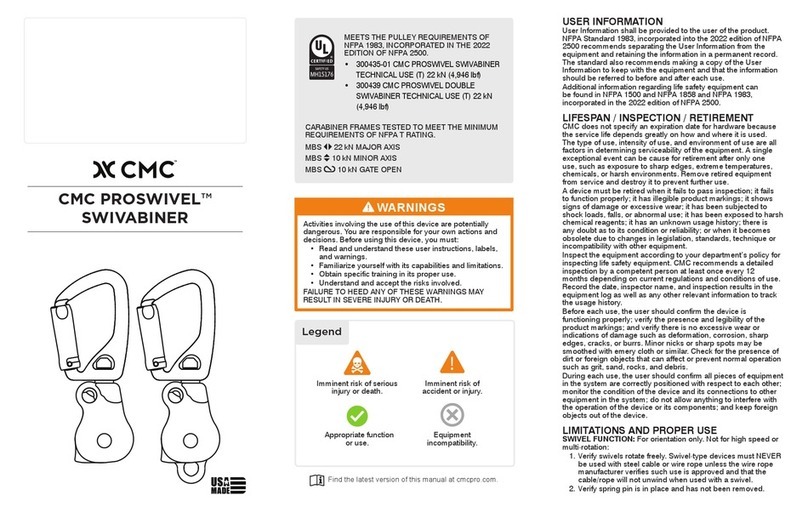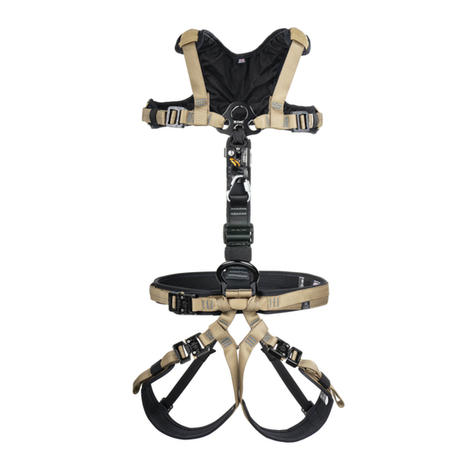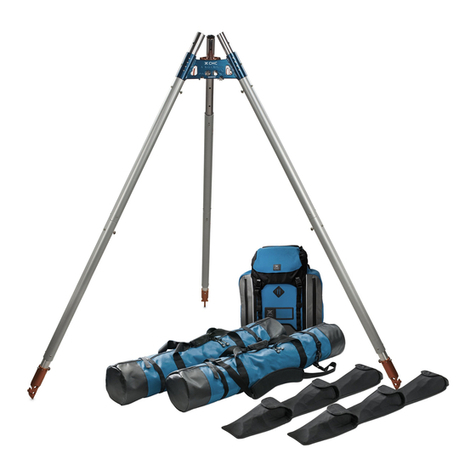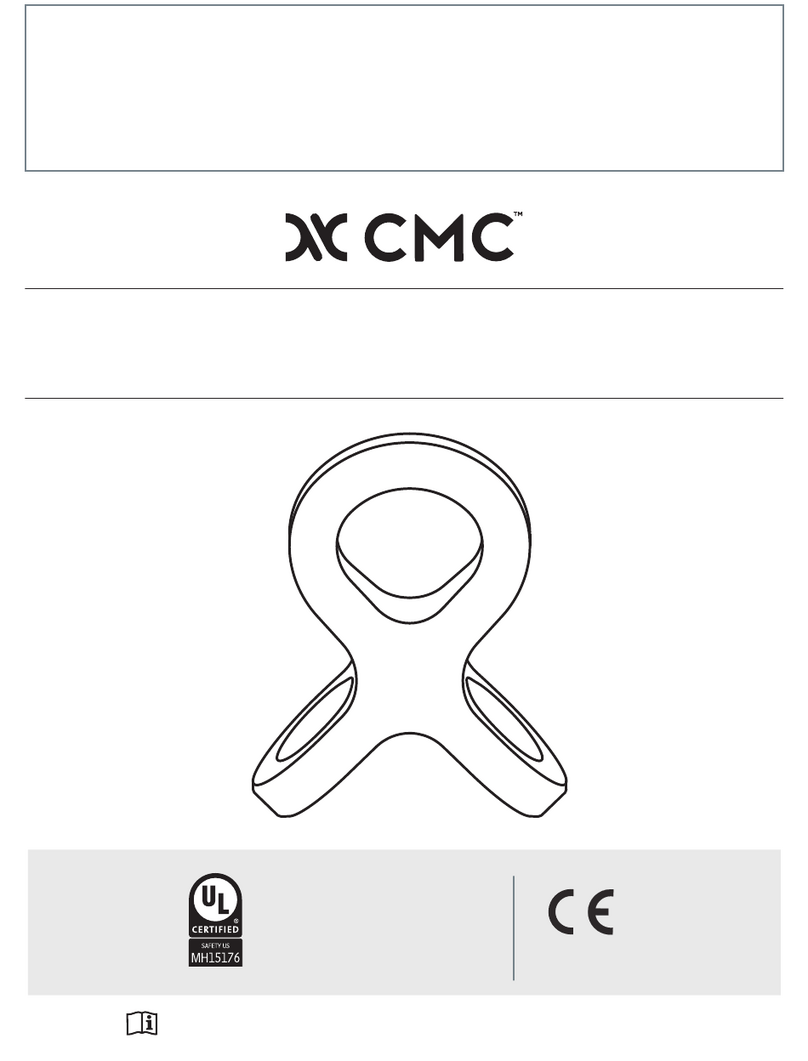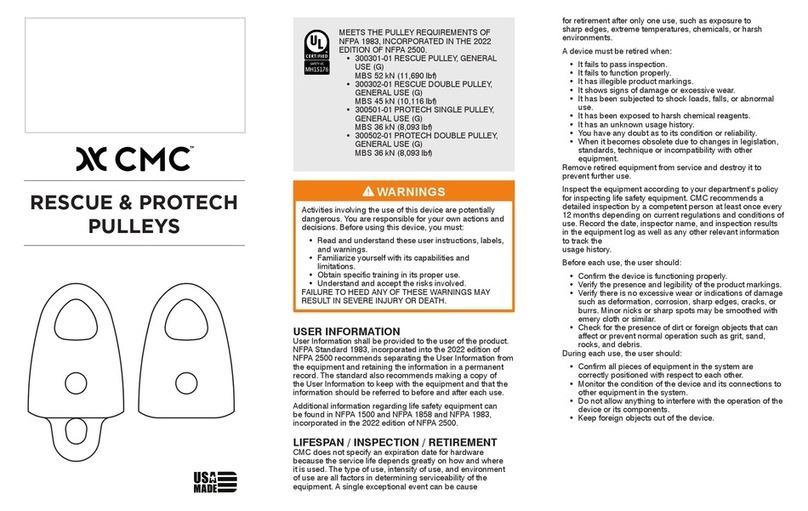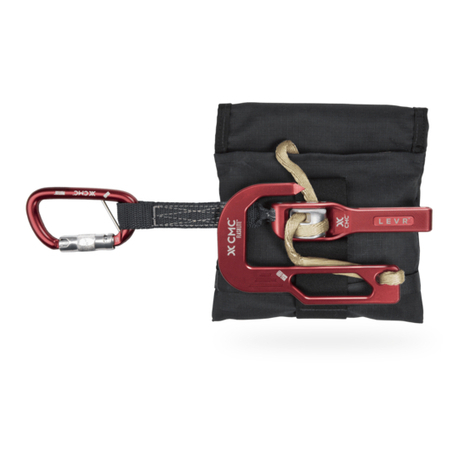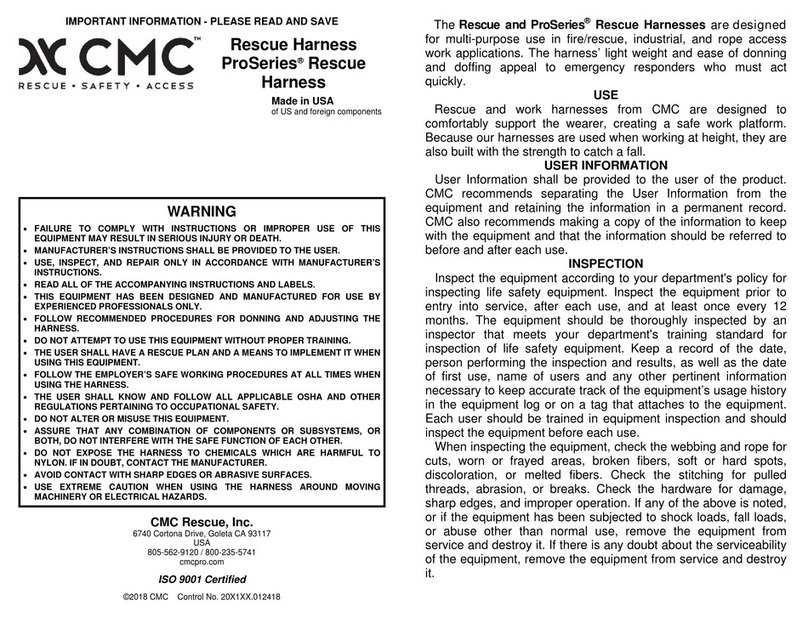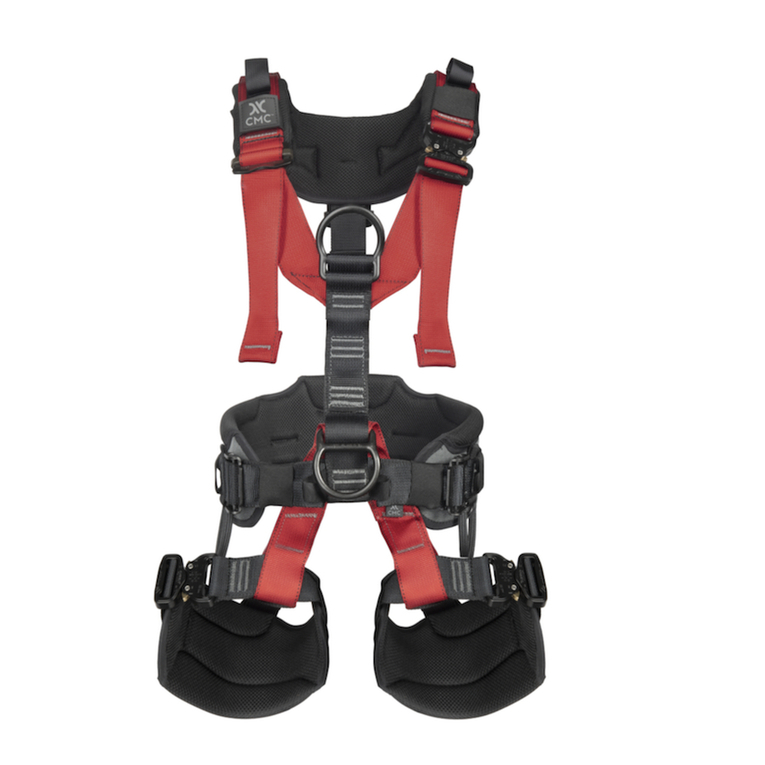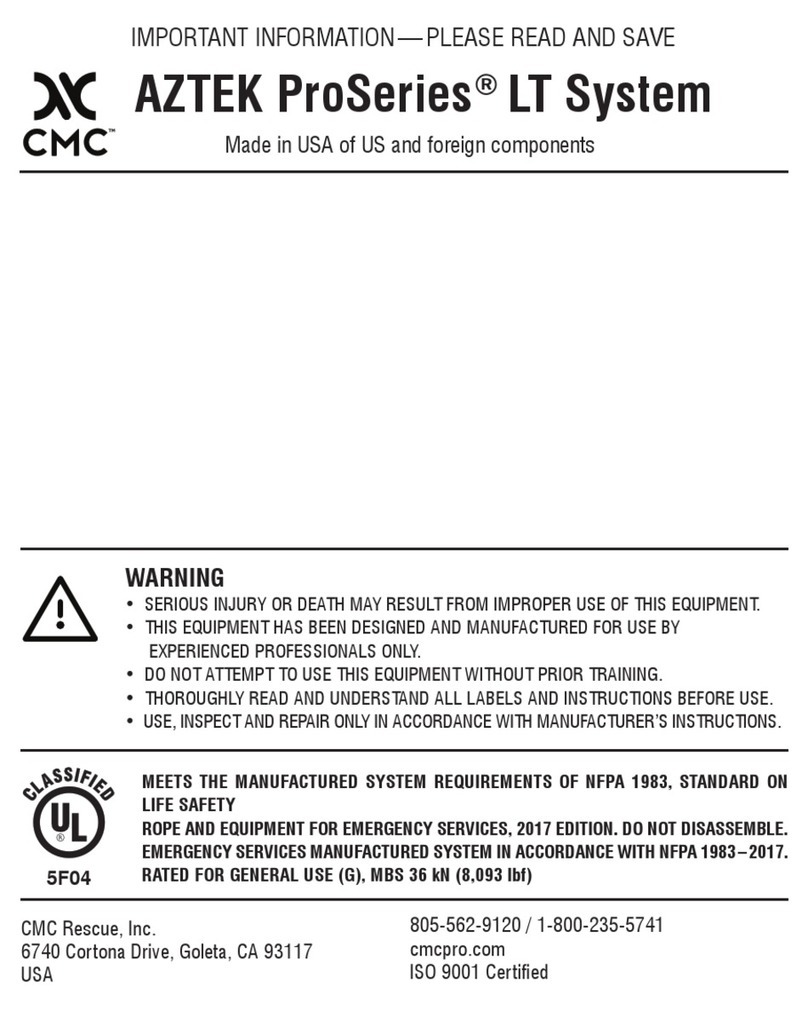
ISO 9001 Certied
© CMC Rescue, Inc. All rights reserved
CMC and are registered marks of CMC
Rescue Inc.
CMC Control No.: 300391-01IN01_Rev01
CMC Rescue, Inc.
6740 Cortona Drive
Goleta, CA 93117, USA
805-562-9120 / 800-235-5741
cmcpro.com
The Kootenay sheave is equipped with two ball bearings for
efciency. The sheave can be locked for use as a high strength
tie-off using the included screw. The Kootenay is compact
while having the capability to pass knots. It has two extra holes
that can be used for hoist lines, in addition to the standard tag
line holes. See below for additional product-specic guidance.
• To prevent roll-out, use only locking carabiners. Do not
allow ropes or objects to rub or twist the sleeve because
this could unlock it. Vibration can also unlock a sleeve.
Sleeves must be locked to achieve full strength.
• Check that the sheave is in good condition and freely
rotates. Conrm security of the axle screw.
• Do not let an object in between the sideplates and never
rig your system so that the pulley is forced against
something that could break or open the sideplate.
• Sideplates must be closed and both must be attached to
the anchor. Connecting to only one sideplate is forbidden.
Pulleys must be free to align with the load, any restraint
is dangerous.
• When using the pulley as a highline carriage or a knot-
pass pulley, ensure that the sheave is unlocked and
allows freewheeling.
• High Strength Tie-Off: For use as a High-Strength Tie-Off,
ensure that the sheave is locked off by securing (hand
tight) the locking bolt in one of the sheave holes. (The
locking bolt can be secured in the axle assembly when
not in use). Wrap the rope multiple times (at least 3, but
not so many that the rope rolls over itself) around the
sheave. The running end of the rope should be anchored
using a separate carabiner to an anchor located behind
the pulley or to the standing part of the rope. This use
requires advanced special training. The rope must never
contact a sharp edge. There are many hazards associated
with applying high forces on a rope
• Edge Roller: The Kootenay Ultra Pulley may also be used
as an edge roller. When using it as an edge roller make
sure that the sheave is unlocked and is freewheeling.
Also make sure that the pulley is secured in a manner to
prevent it from falling over the edge.
• The additional holes allow complete separation of tag
lines and hoist/reeve lines. Independent holes for hoist
lines and the resulting separation from the reeving line
help prevent spinning of the load below the highline. The
extra holes also make rigging easier and help prevent
carabiners from interfering with each other.
CARRYING, MAINTENANCE & STORAGE
During all use, carrying, storage and transport keep the
equipment away from acids, alkalis, rust and strong
chemicals. Do not expose the equipment to direct heat, ame
or high temperatures. Clean equipment using clean fresh
water to remove any dust or debris. Do not use a pressure
washer for cleaning. If the equipment gets wet, remove
excess moisture and allow to air dry at temperatures between
10° C and 30° C. Lubricate moving parts as needed. During
storage and transport, protect the equipment from heat, direct
sunlight, moisture, chemicals, and external loads or impacts.
Do not store where the equipment may be exposed to moist
air, particularly where dissimilar metals are stored together.
WARRANTY & REPAIRS
If your CMC product has a defect due to workmanship or
materials, please contact CMC Customer Support at info@
cmcpro.com for warranty information and service. CMC’s
warranty does not cover damages caused by improper
care, improper use, alterations and modications, accidental
damage or the natural breakdown of material over extended
use and time. The equipment should not be modied in
any way or altered to allow attachment of additional parts
without the manufacturer’s written recommendation. If original
components are modied or removed from the product, its
safety aspects may be restricted. All repair work shall be
performed by the manufacturer. All other work or modications
void the warranty and releases CMC from all liability and
responsibility as the manufacturer.
SAMPLE INSPECTION AND
MAINTENANCE LOG
The following sample log provides an example of the records
that can be maintained by the purchaser or user.
EQUIPMENT INSPECTION AND
MAINTENANCE LOG
Item______________#______ Date in Service________
Brand/Model_________________ Strength___________
Date How Used or Maintained Comments Name
Find the latest version of this manual at cmcpro.com.
